Software is Polluting the World
The carbon cost of digital design
1. Introduction to Internet Pollution
“Please consider the environment before printing this email”.
You have probably seen this line at the bottom of an email before. By now it’s widely known that you should pay attention to what you print to reduce your carbon footprint. But how much does it cost sending this email in the first place?
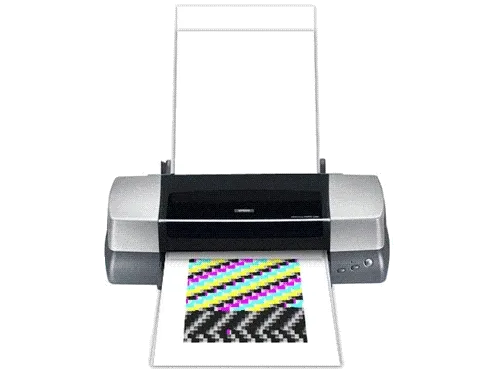
What few people realise is that there is also something called digital pollution. When we send emails we are using computational energy; this energy usage increases our carbon footprint and can have a big impact in the long run. That makes “Please consider the environment before sending this email” a valid statement as well.
The Internet consumes large amounts of electricity in data centers, telecoms networks and consumer devices. If the Internet was a country, it would be the 6th largest polluter in the world. (Nature.com, 2018).
Carbon emissions and their impact on the environment are luckily widely discussed in the modern day. So much so, that a certain sense of embarrassment has arisen when becoming aware of your own carbon footprint. One of the new terms that has come from this is ‘flygskam’, the Swedish word that describes the feeling of shame that comes from traveling by airplane with the knowledge of how much pollution it causes.

How much is your entertainment worth?
Watching Netflix for half an hour produces 1.6 kg of carbon dioxide, which is about the same as driving 6.28 kilometers. You would need to plant a tree each month to offset one hour of Netflix per day. Or as the BBC calculated: Watching 30 minutes of TV on Netflix leads to emissions of 0.2kg CO2, a slightly smaller footprint than boiling a kettle three times.
Since most Netflix shows have a running time of 50 minutes and we usually watch more than one show at a time, plus the fact that there are more than 270 million people with a Netflix subscription, it is safe to say that those numbers add up quickly.
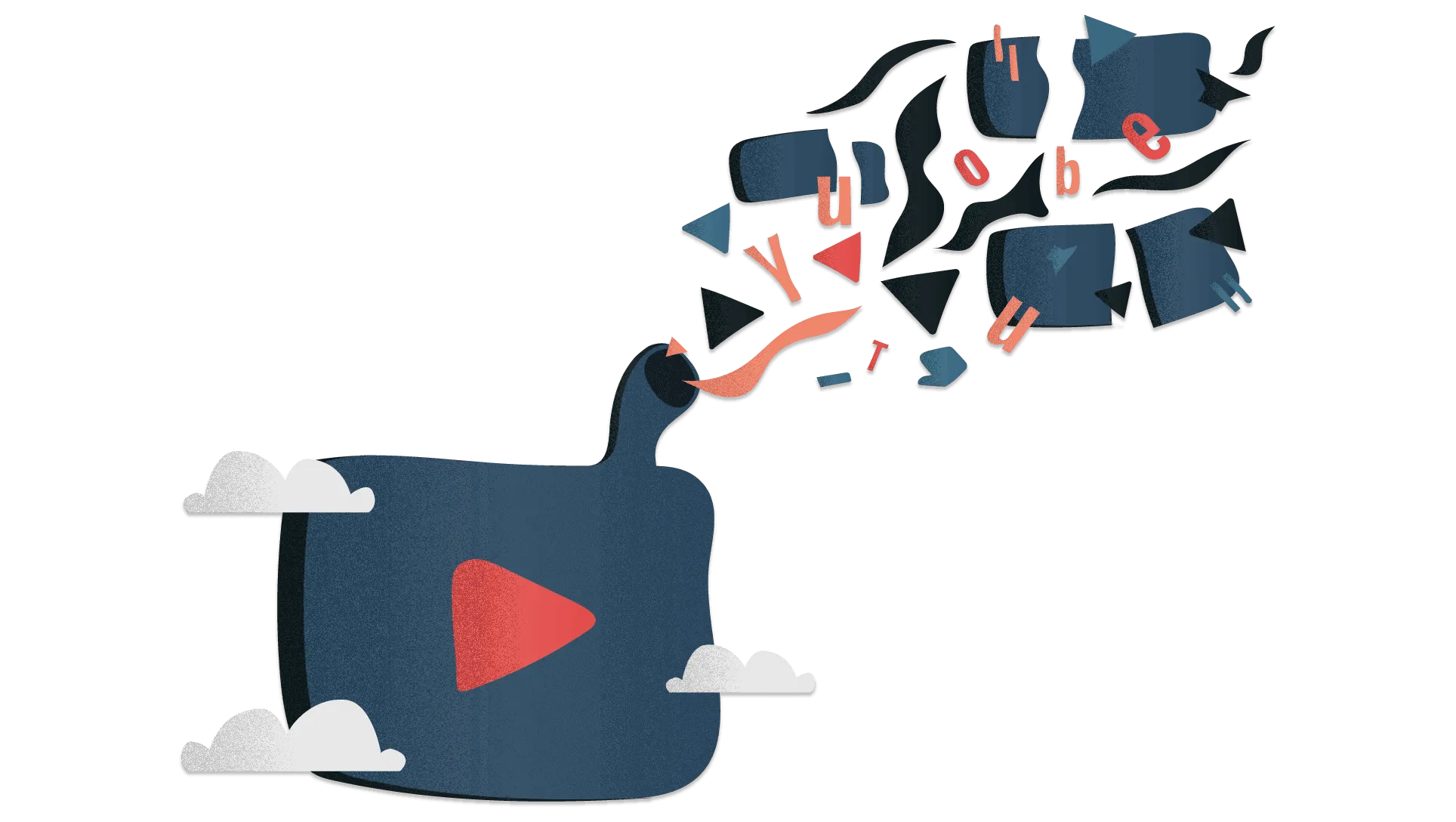
The most recent data from Greenpeace’s yearly ClickClean report also shows that Netflix is still powered by 100% non-renewable energy. The digital pollution is especially prevalent in video streaming services, because unlike music streaming services, they consume a lot more data. Apple Music, for example, only uses 4MB per minute for high-quality streaming, whereas Netflix alone consumes 360 MB of data per minute for medium-quality streaming and 3000 MB of data per minute for high-quality streaming.
Although digital pollution is primarily a byproduct of digital consumption, it’s important to note that electronic devices themselves also carry a large ecological impact. A significant amount of carbon emissions is generated during the manufacturing, transportation, and disposal of these devices. Due to planned or perceived obsolescence, an electronic device is replaced, on average, every 18-24 months. These devices, along with the infrastructure that supports them such as data centers and network routers, end up as toxic electronic waste.
2. Shaping a More Sustainable Digital Future
The widespread adoption of digital technologies has brought immense benefits to our society, but this progress has come at an environmental cost. Just as we’re conscious of our ecological impact when we drive cars or heat our homes, we need to be aware of the carbon emissions associated with our digital habits. As designers, developers, and users of these technologies, we have the opportunity to shape a more sustainable digital future.
Design for digital sustainability
Luckily there are ways to cut down on our digital pollution. User Experience as a discipline should add sustainability into its core definition. We need to design experiences that are both user-friendly and environmentally conscious.
When designing sustainable UX (User Experience) we need to optimise digital content and delivery to not only consider the user, but also the environment. UX Designers should not only improve the quality of interaction between user and product but they should also be aware of the impact that the digital design might have on our climate. Sustainable UX asks both environmental and people-friendly questions and aims at tackling real human needs by taking into account the wellbeing of people and the planet.
There are three categories for sustainable design: environmental (how can designers make a greener web), people (a well-designed product can help users live in a more sustainable way), and business (a better user experience means better business).
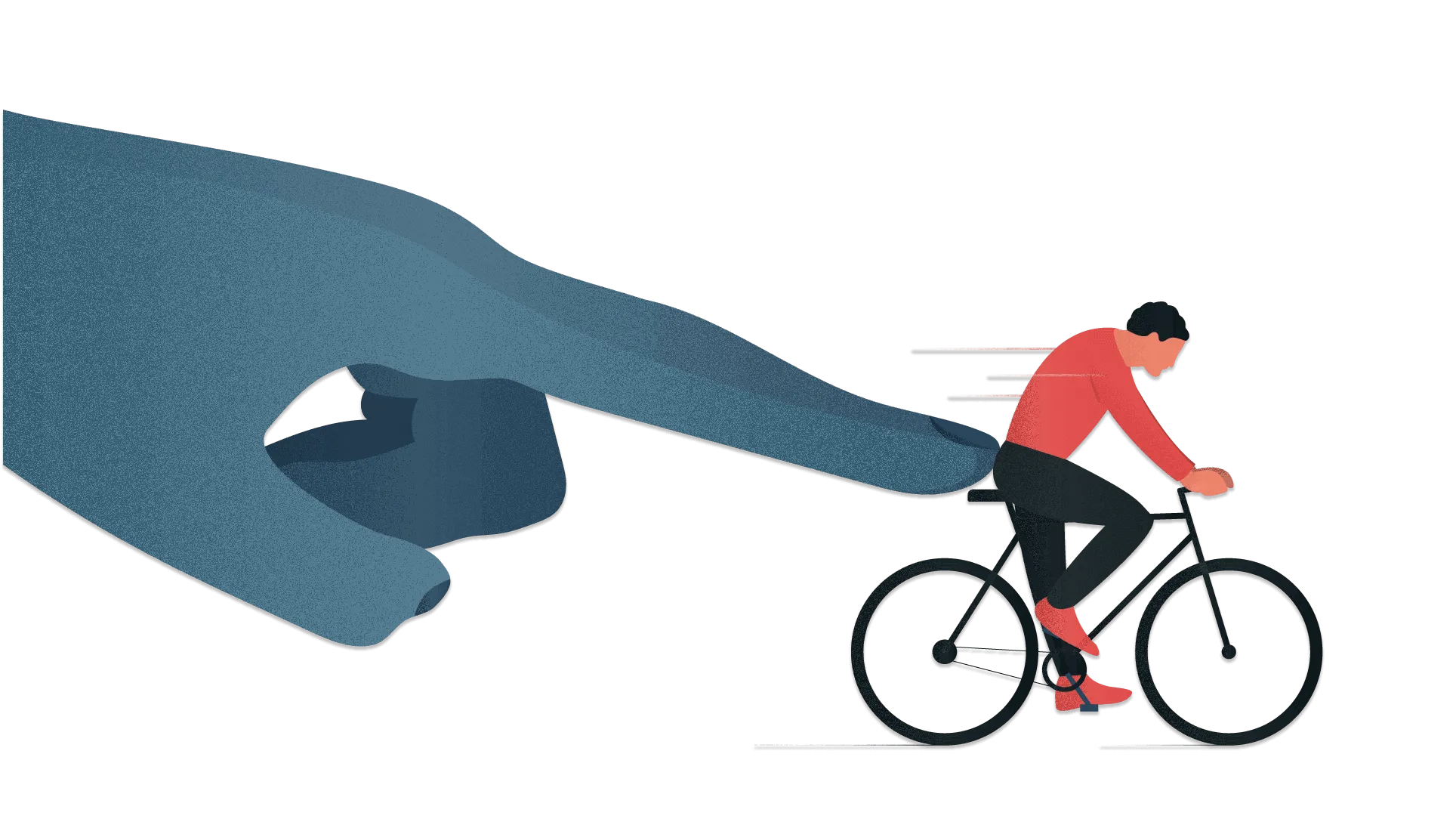
Real life actions
The reality is that the carbon emissions from watching video have already surpassed those from the aviation industry. For example, did you know that a site with 100,000 page views per month could reduce its carbon footprint by 446 kg of CO2 per year simply by optimizing images and videos?
There are plenty of actions we can take to embrace sustainability.
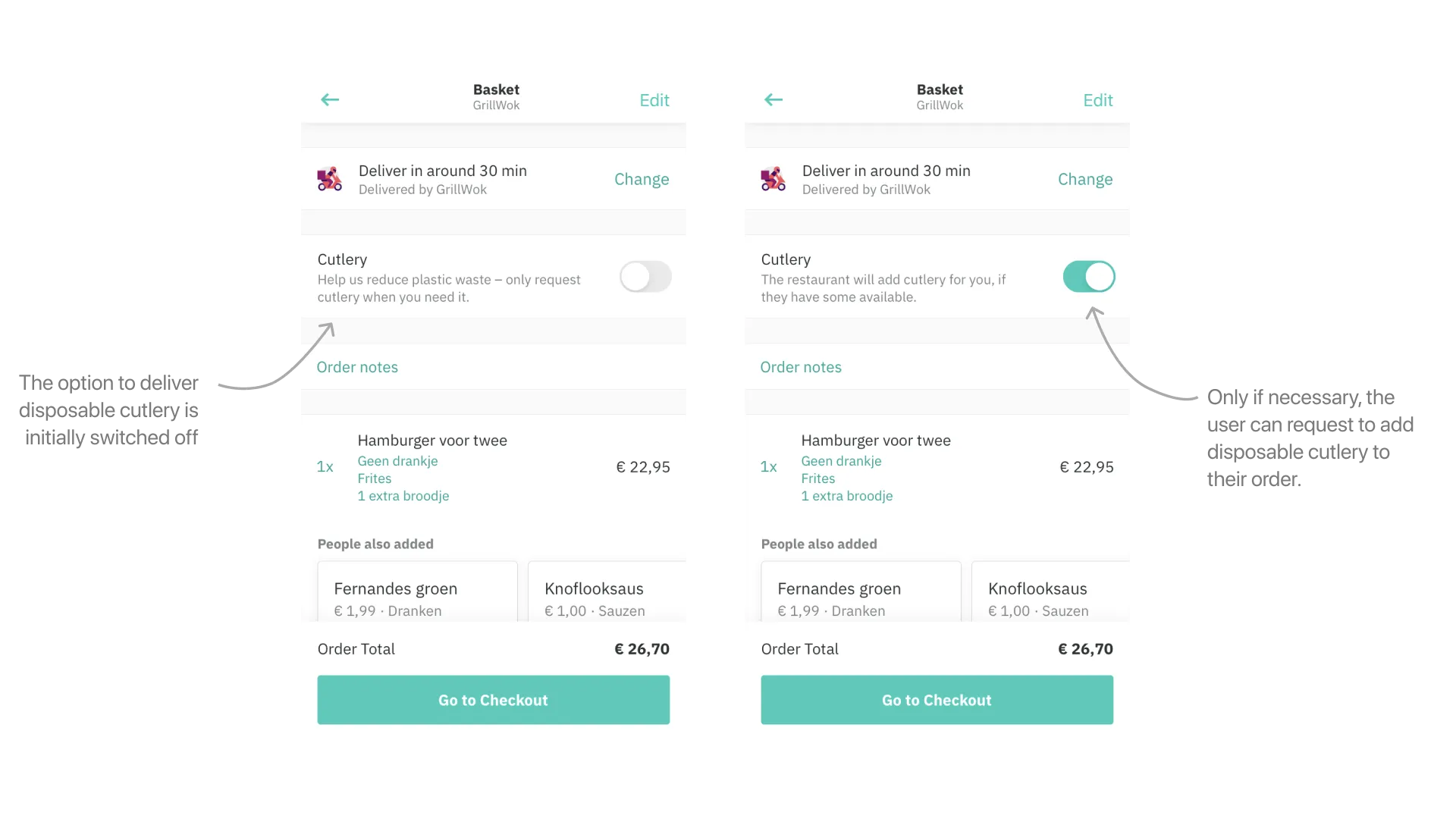
Remove Unnecessary Printing Options
Certain services still have a print option despite the fact that it’s completely unnecessary. If you’re building Spotify, do you really need a print option for a playlist? People using a service like Spotify can be assumed to have a digital device. Even email apps often include a print option in their native app despite printing being a physical activity. What’s more, it’s a little counterproductive to send an email with the message “Please consider the environment before printing this email” while at the same time having a print button that’s easy to tap. In fact, these types of buttons can sometimes be tapped by accident, wasting paper, ink, and energy.
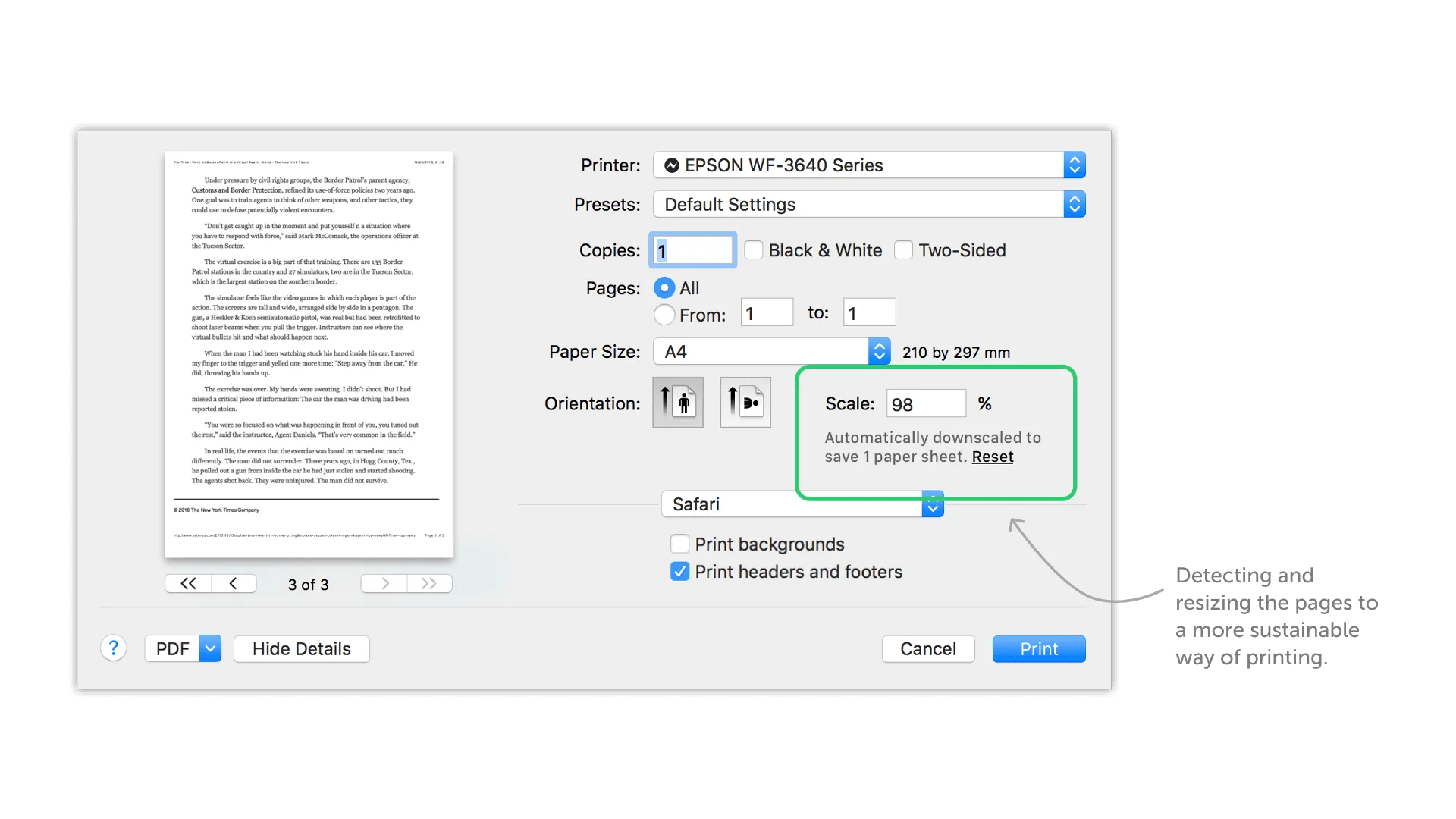
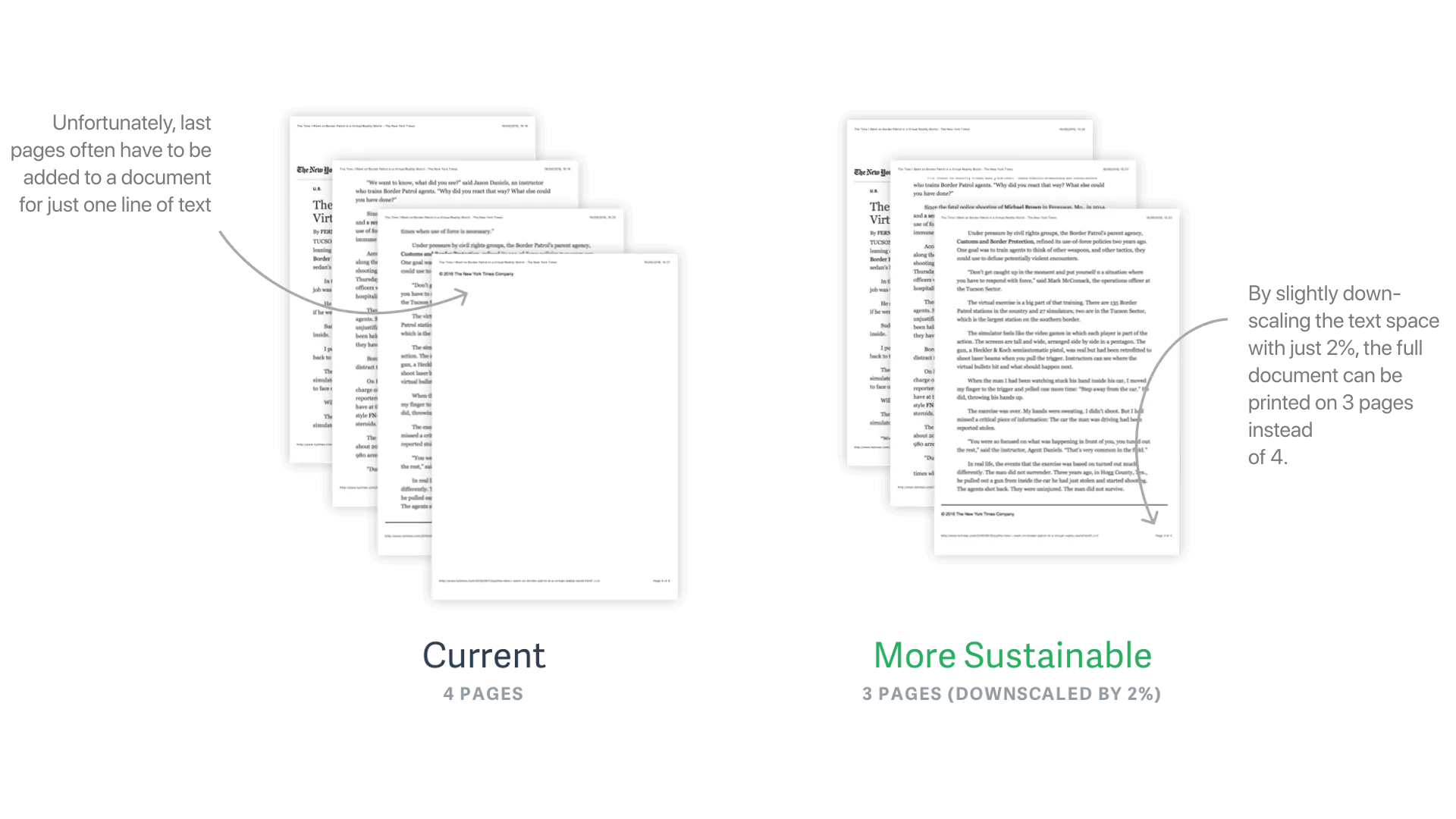
Limit the Scope of Delivery
Delivery services may be showing delivery areas that are way too extensive. Google maps allows you to search and order food from restaurants that are multiple kilometers away. But do we really need to deliver food from a restaurant that’s on the other side of a city? Limiting the radius of delivery in a food delivery app can cut down on the carbon emissions associated with transportation.
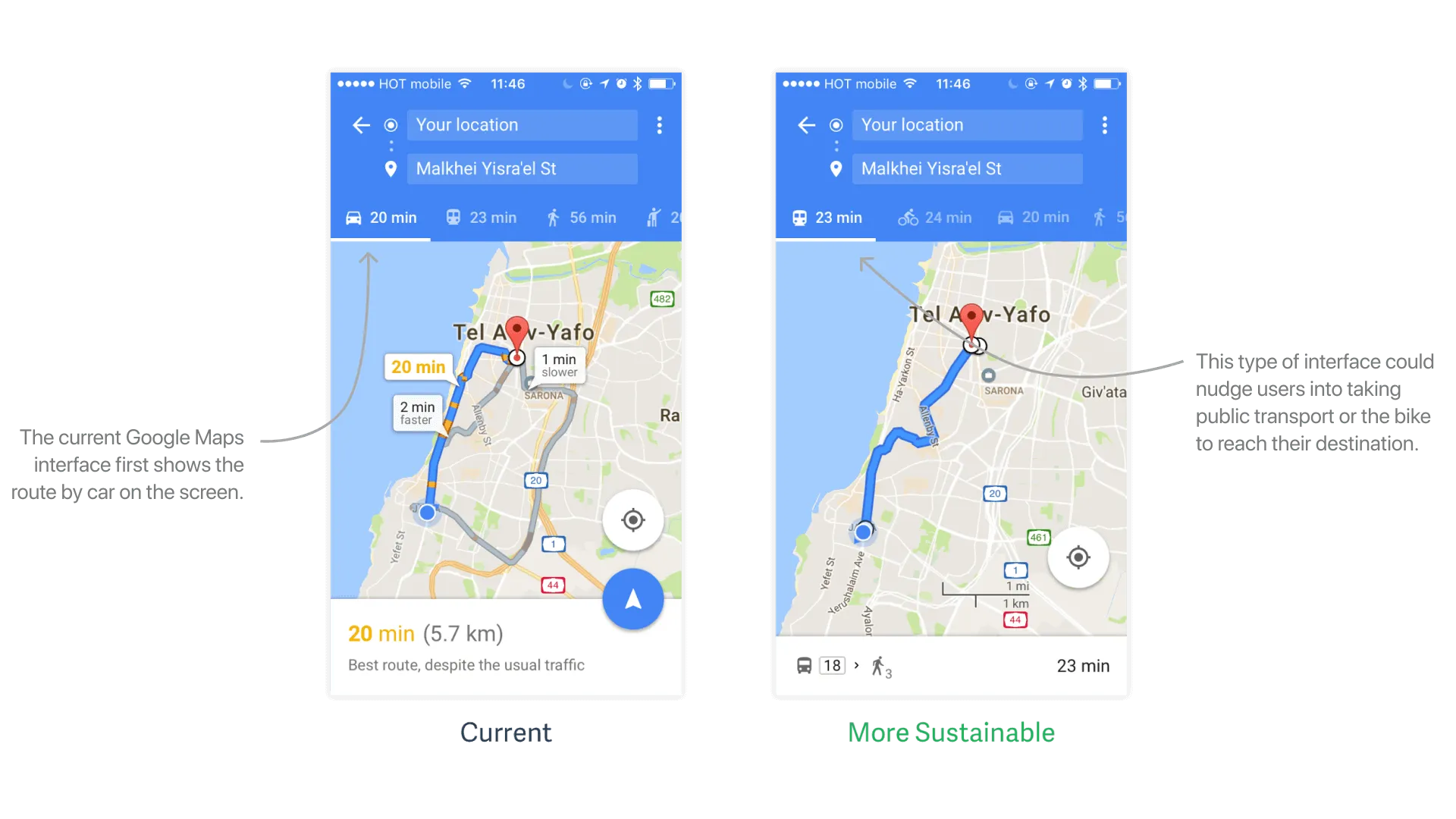
Reduce Digital Waste
When texting, services like iMessage send a ‘delivered’, ‘read’, and ‘typing’ status update. This means that on top of sending the actual message, three more HTTP messages are sent to the other person. All of these unnecessary updates add up to create digital waste. Imagine the energy saved by removing these extra layers of updates across millions of messages. (Although the typing bubbles are like the heartbeat of your message, they might not be necessary.)
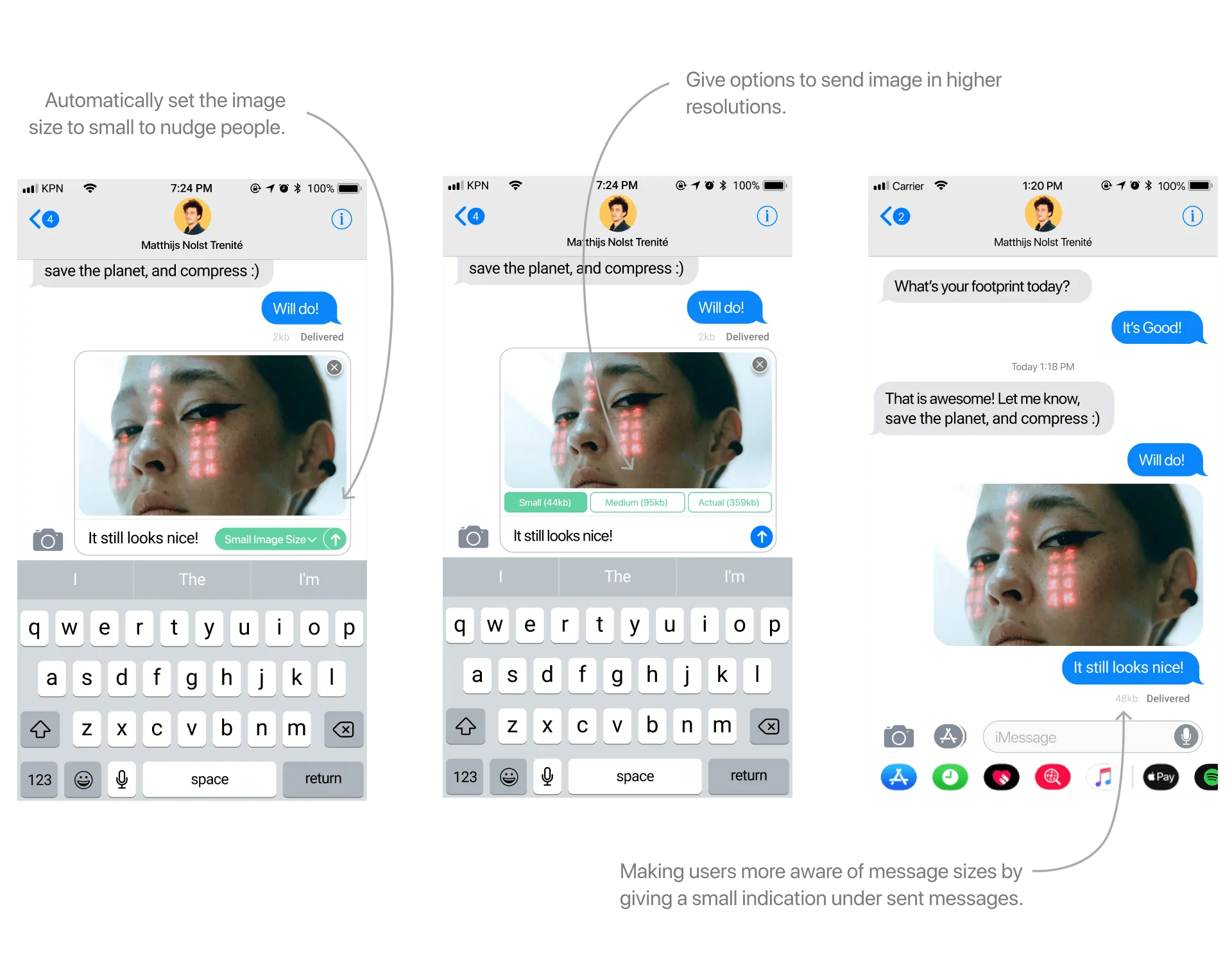
Create Awareness
Software can create awareness about its own impact. Operating systems like iOS give information about screen time, companies like Apple produce environmental reports with information about the carbon footprint of their devices, and new features give you information about battery consumption on your phone. Similarly, we could create awareness about the carbon footprint of digital products. This would allow people to make more informed decisions about their digital consumption. It is, however, a small challenge to communicate this properly without turning people off.
Calculate Carbon Footprint
Websites can now calculate their carbon footprint and provide that information to users. While the formula for calculating a website’s carbon footprint is not incredibly complicated, it would be useful for hosting services like AWS to give this information upfront to their users.
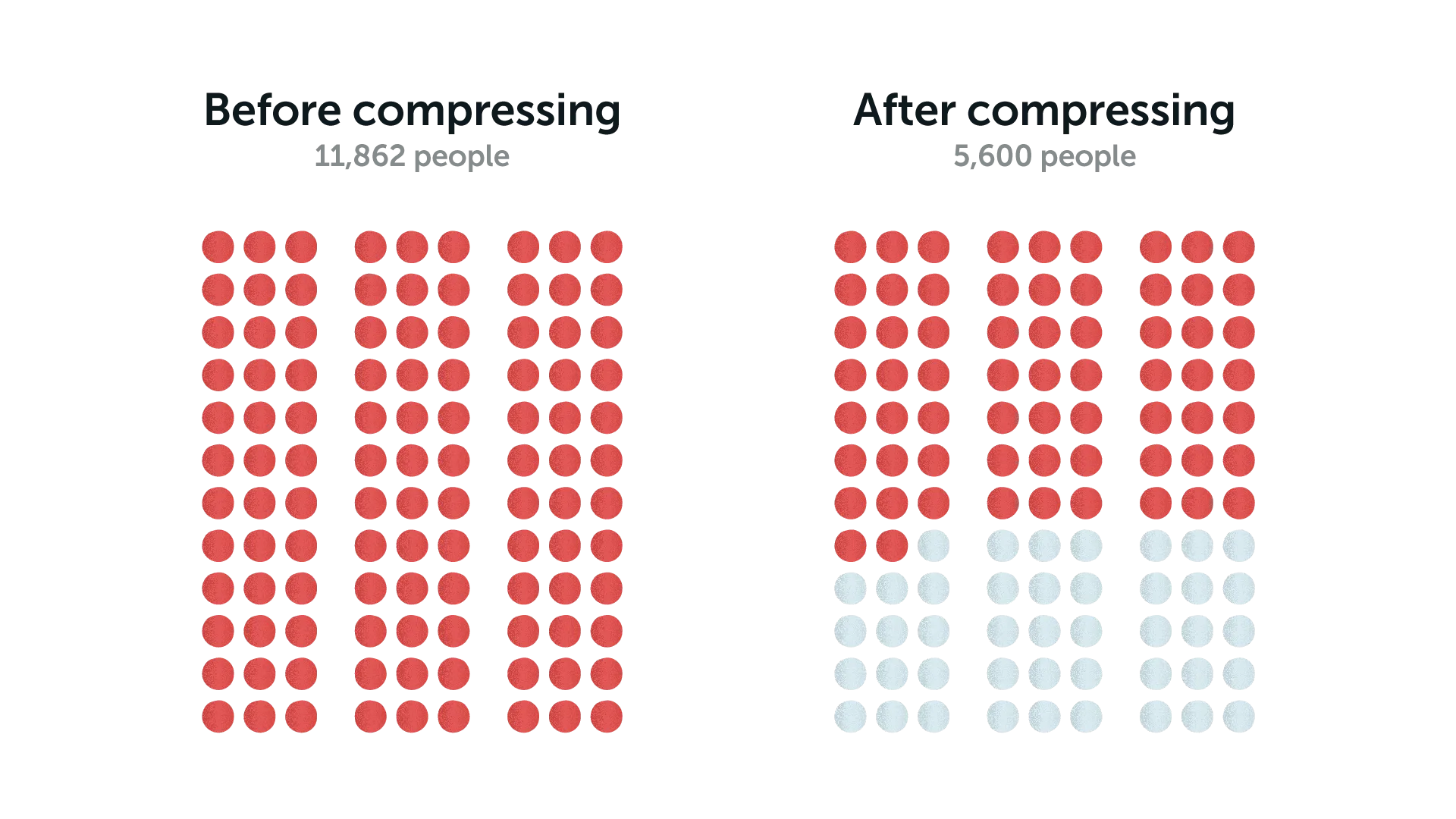
Compress and Optimise
Images, videos and webpages should be compressed and optimised to reduce data transfer. Using webp instead of jpg already uses 26% less data, but can we do more? It’s common for websites to be bloated and unoptimised, leading to unnecessary data transfer and energy consumption. By focusing on efficiency and minimising the resources required to deliver digital content, we can significantly reduce the carbon footprint of our digital experiences. Instagram, for example, compresses images, which can help reduce the amount of data transferred, but could they do more given the number of users?
In fact, all of the design trends that emphasise minimal data output (like static websites, system fonts, no cookies, less javascript etc) also lead to less data transferred and more sustainable websites.
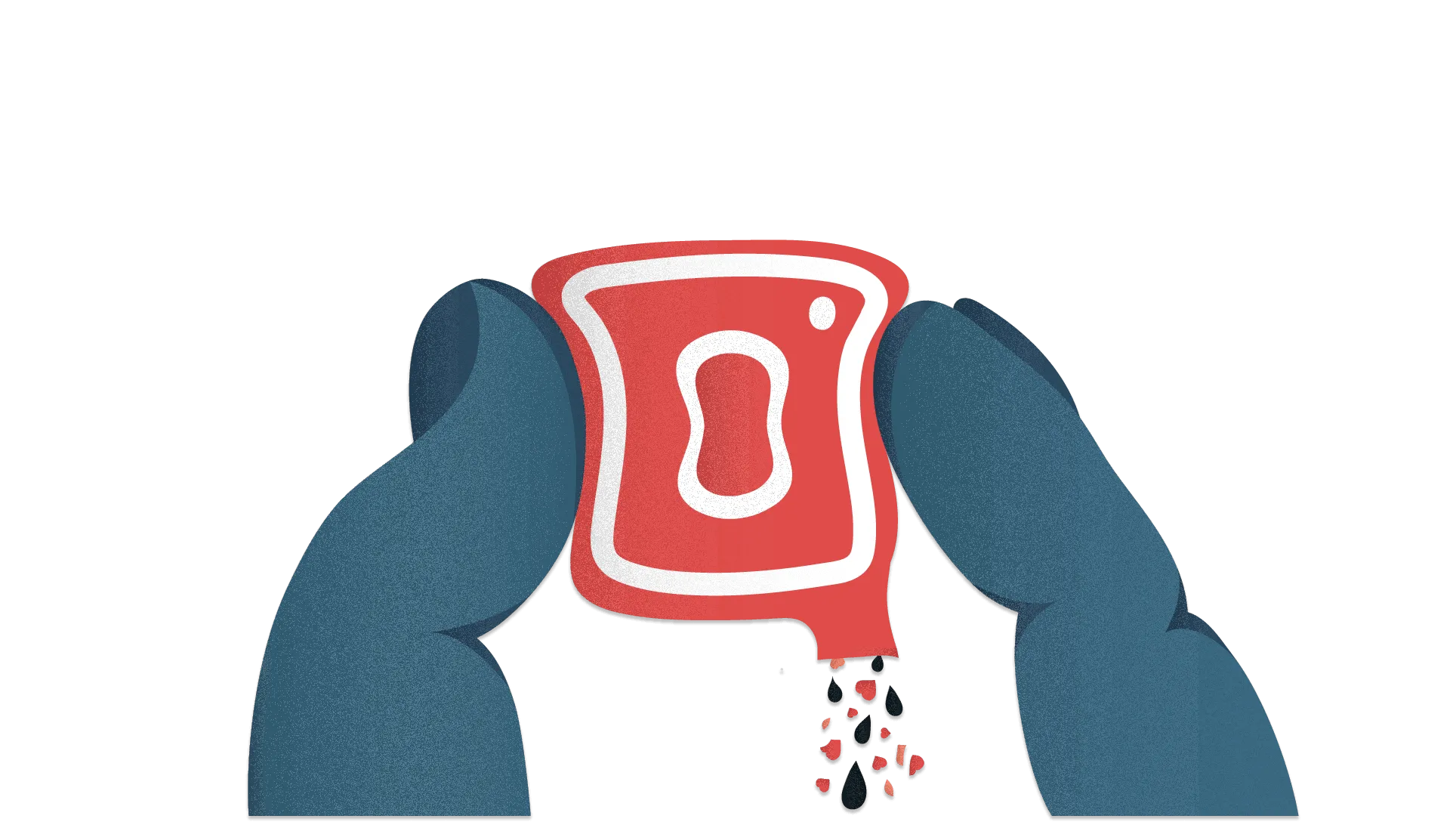
I mention Instagram because it is a photo platform which creates tons of data with over 100 million photos uploaded each day which consume 35GB of data per minute. We can and should do more to optimise such platforms.
Adjust Navigation
Websites like Ikea do users the disservice of showing breadcrumbs navigation with drop downs. Dropping down a menu is another HTTP request, which requires energy. It’s not only annoying for the user, but also for the environment. Navigation should be clean and straightforward, reducing the number of HTTP requests and the amount of energy consumed.
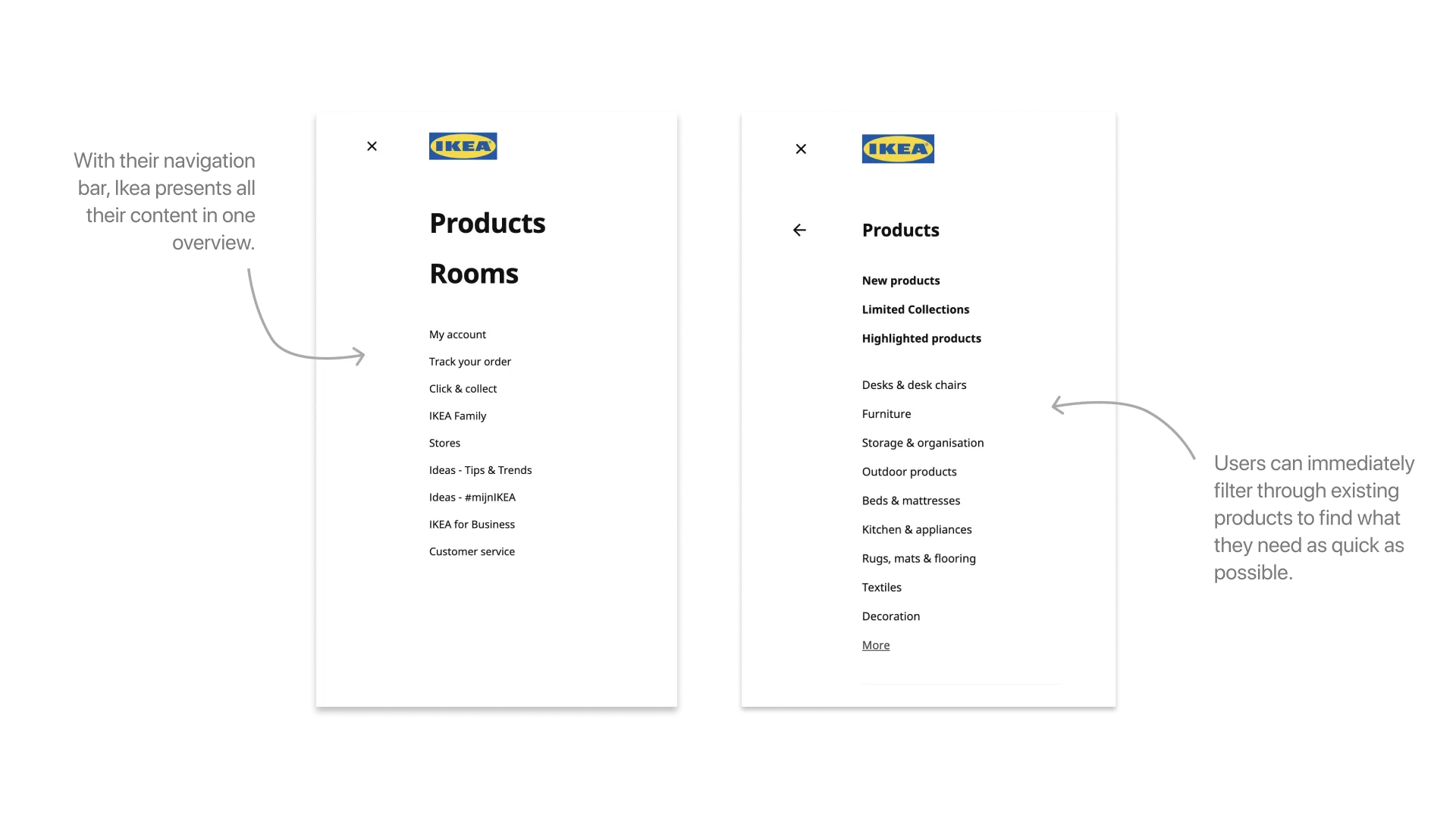
Improve Search
Ikea’s search experience is also a good example of what not to do for environmental or user experience purposes. The search engine is slow, which means it uses more computational energy, and the fact that the user has to search three times (once to look for an item, once to check its availability, and once to find a store) means that the carbon footprint of a single search is multiplied.

Consider Low-Tech Solutions Low tech magazine’s solar powered website takes an extreme approach to digital sustainability. The site goes offline when there’s no solar energy to power it. While this might be too radical for most services, the concept behind it is commendable. We don’t always need the highest definition or the fastest response times for every digital service. Sometimes, simpler solutions that require less energy are more than adequate.
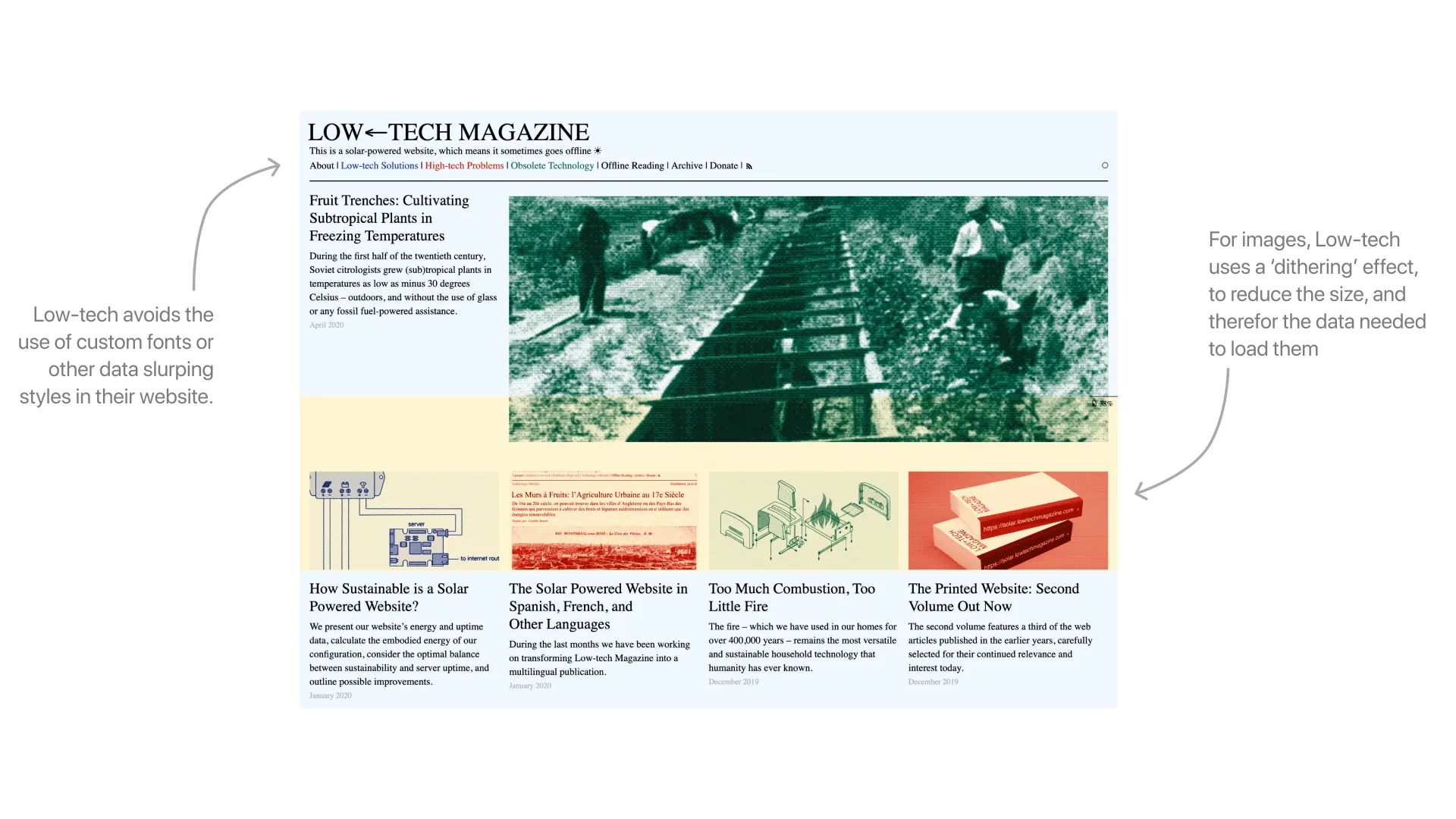
Integrate Sustainable Practices Businesses should integrate sustainable practices into their overall brand strategy. This not only helps reduce their carbon footprint but can also enhance their brand image. Consumers are increasingly making choices based on a company’s sustainability practices.
Create Sustainable Alternatives
Designers can create sustainable alternatives to existing services. For instance, Instagram’s archive is a way to recycle old content and reduce the need for new content production. By promoting the reuse of existing digital content, we can reduce the energy needed for new content creation and distribution.
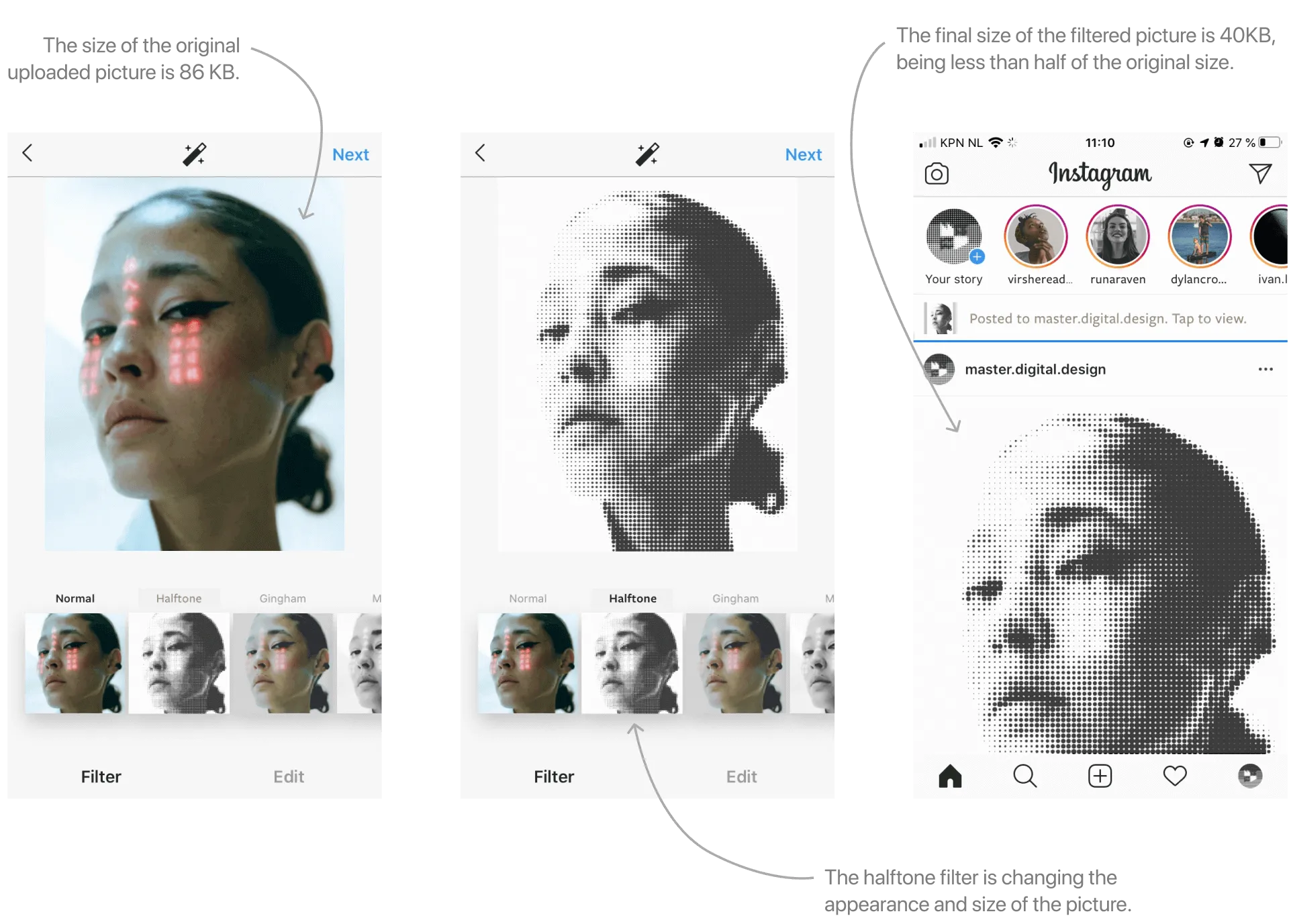
The way we share Instagram stories, for example, uses an insane amount of extra processing power. In fact, Instagram Stories use far more processing power than regular posts. Perhaps we should think more carefully about how we share temporary content.
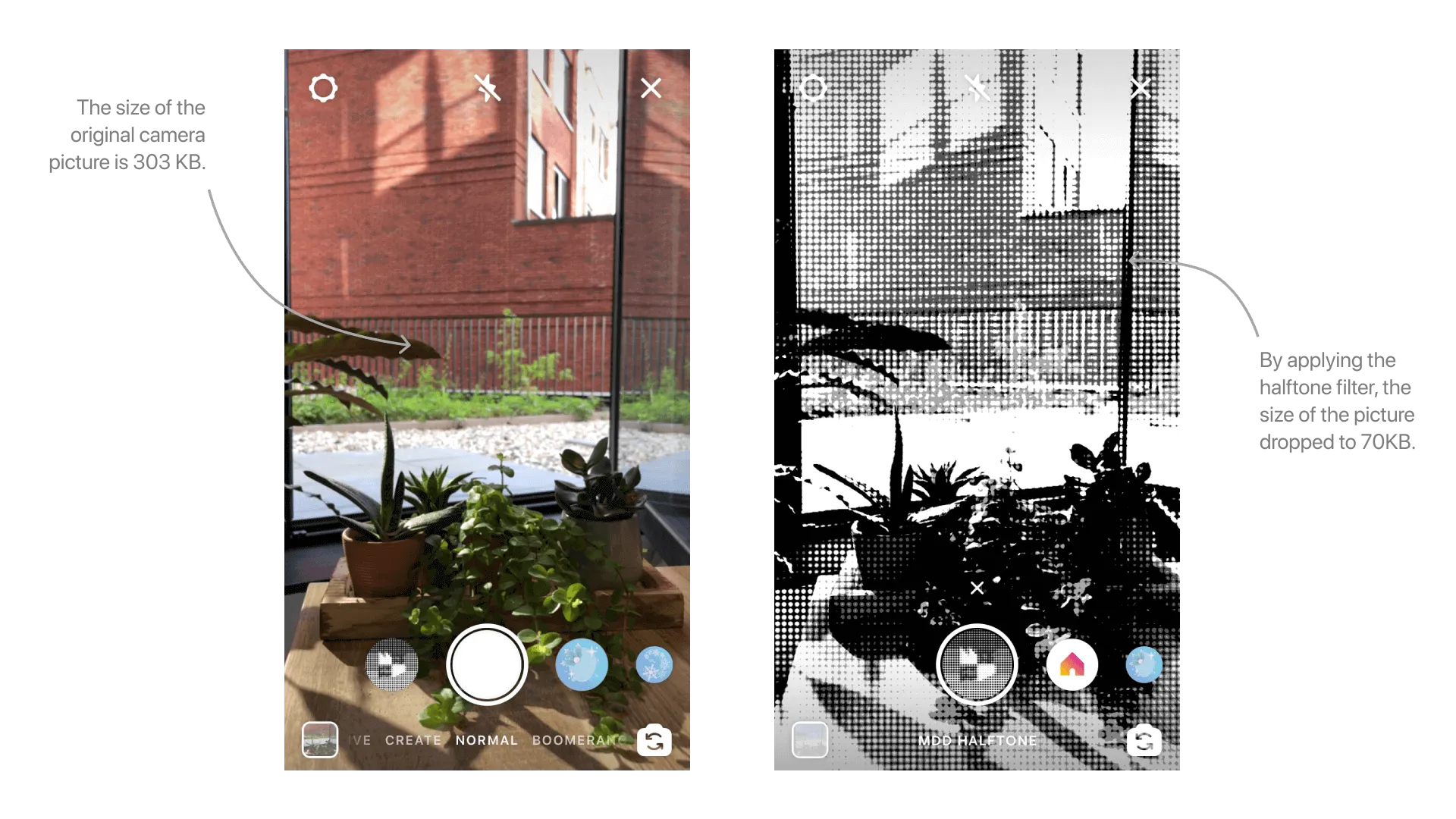
Substitute Where Possible
Using halftone illustrations instead of pure photographs can save a lot of energy, as halftone images use less data and therefore require less computational power and memory to display.

Small tweaks for big change
Remember that each click, swipe, and scroll requires energy. By making our digital interactions more efficient, we can significantly reduce the energy required to sustain them. Just as we shut off the lights when we leave a room to save energy, we should consider the energy implications of our digital habits.
The tweaks that I’ve shown here might seem small, but considering the billions of people using digital services daily, the cumulative impact could be substantial. It’s like the saying goes, “No one can do everything, but everyone can do something.” By making conscious choices about how we design, develop, and use digital services, we can collectively make a meaningful difference in reducing our digital carbon footprint.
Digital products inevitably “leak” energy. Websites in particular seem to be growing larger and more energy-intensive. According to the HTTP archive, the average webpage produces over 1.5 MB of carbon dioxide per page view. This is equivalent to leaving an LED light on for an hour. Considering the billions of webpage views that occur daily, the energy consumption is enormous.
The amount of wasted energy is “leaking” out of our tablets, just as it is on a global level.

3. Taking Action: Towards a More Sustainable Digital Future
We’re at a crucial juncture in our digital evolution. The unseen or unrealized impact of our digital habits is becoming increasingly evident, and the time to act is now. Just as we’ve learned to reduce, reuse, and recycle in our physical world, we need to adopt sustainable practices in our digital world. Every pixel, every byte, and every click has a carbon cost, and it’s up to us to make that cost as low as possible.
Individual Steps We Can Take
Each of us has the power to make a difference. Simply being aware of our digital footprint is the first step. Just as we might choose to walk or bike instead of driving for short distances, we can make conscious choices about our digital consumption:
- Turn Off Autoplay: Streaming services often default to automatically playing the next episode. By turning off this feature, we can consciously decide when to continue watching, reducing unnecessary streaming.
- Reduce Screen Time: Beyond the benefits to our mental health, reducing screen time directly correlates to reduced energy consumption. Tools like Screen Time on iOS can help us monitor and manage our digital consumption.
- Unsubscribe and Delete: Clearing out old emails and unsubscribing from newsletters we don’t read reduces data storage and the energy required to maintain that storage.
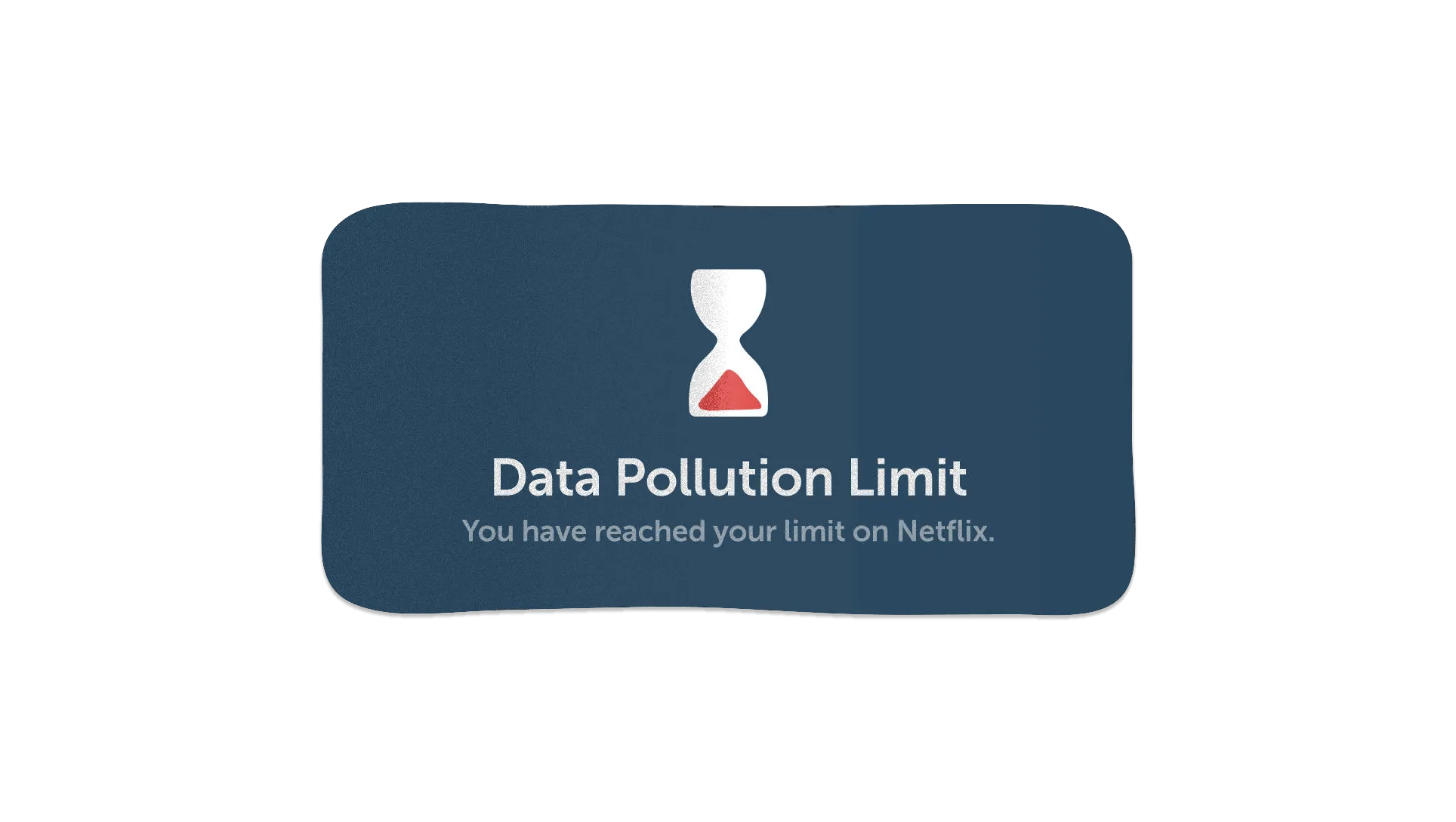
For Designers and Developers:
Sustainable UX is more than just a trend; it’s a responsibility. As creators of digital experiences, designers and developers have a unique opportunity to influence how billions of people interact with the digital world.
- Eco-friendly Design Patterns: Choose design patterns that minimize data usage and processing power. A simpler, more efficient design can be just as effective and much more sustainable.
- Data-conscious Development: Optimize code and databases to reduce processing power and data transit. Each optimization might seem small, but the cumulative effect can be substantial when scaled to millions of users.
- Regular Carbon Audits: Just as we audit for user experience and accessibility, we should also audit our digital products for their carbon footprint. This gives us a measurable metric to improve upon.
Loading icons like the example here are almost always present on our devices. Waiting is the key characteristic of our interactions with devices today.
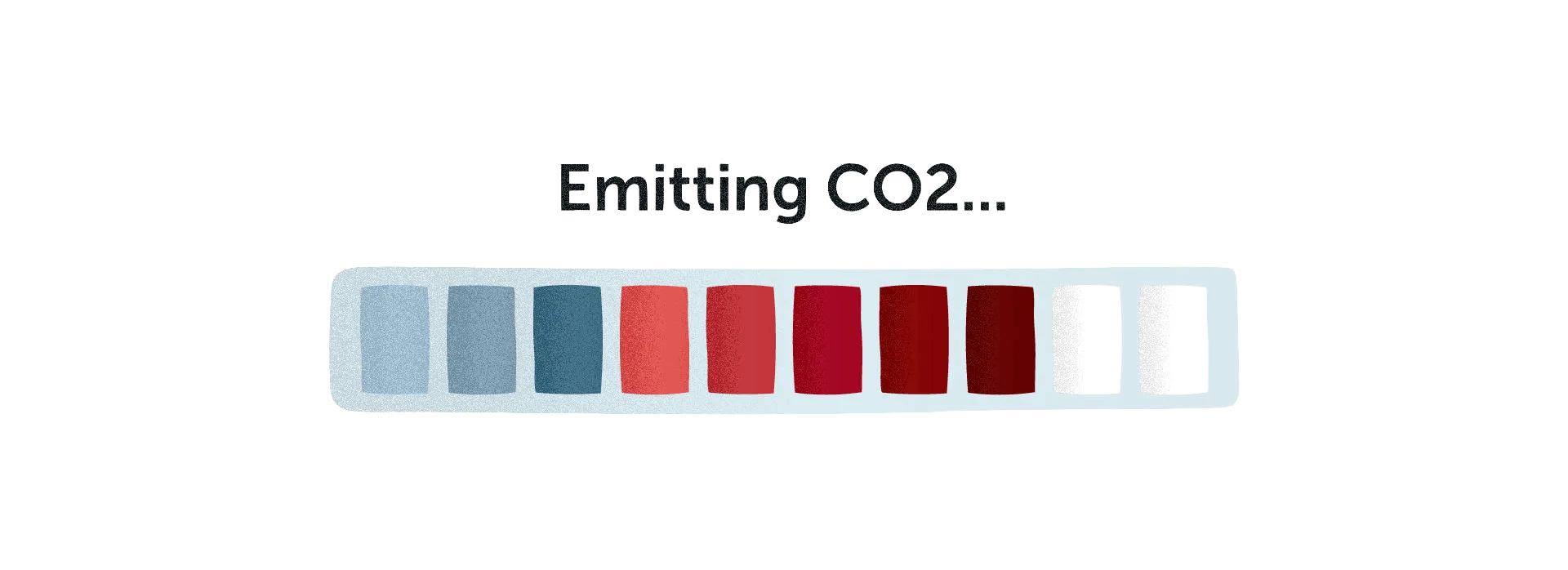
For Businesses:
Businesses are the gatekeepers of many of the digital services we use daily. A commitment from businesses to sustainability can drive significant change:
- Carbon-conscious KPIs: Alongside metrics like user engagement and conversion rates, businesses should consider adding sustainability metrics to their key performance indicators.
- Green Hosting: Choose hosting services that use renewable energy. The difference in carbon footprint can be dramatic.
- Sustainable Business Models: Consider business models that don’t rely on constantly increasing user screen time. More sustainable models might focus on quality over quantity of engagement.
A Collective Responsibility
The challenge of digital pollution is vast, but it’s one we can address together. By making conscious choices as individuals, implementing sustainable practices as creators, and setting carbon-conscious goals as businesses, we can collectively reduce the carbon footprint of our digital world.
Remember, just as the small act of recycling a single water bottle might seem insignificant, but becomes powerful when millions do it, the seemingly small digital choices we make can, collectively, have a profound impact on our planet.
By embracing sustainable UX and being mindful of our digital habits, we can ensure that our digital future is not only innovative and productive, but also sustainable and responsible. The health of our planet depends on it.
Acknowledgements
This essay has been written together with Danique de Bies. Illustrations are by Matthijs Nolst Trenité. The development of the Instagram Filter and calculations are by Gabriela Onu.
Thanks to Cintia Taylor, and Freya von Noorden Pierce for reading drafts of this piece.
The title is a reference to the famous essay by Marc Andreessen called ‘Why Software is Eating the World’.